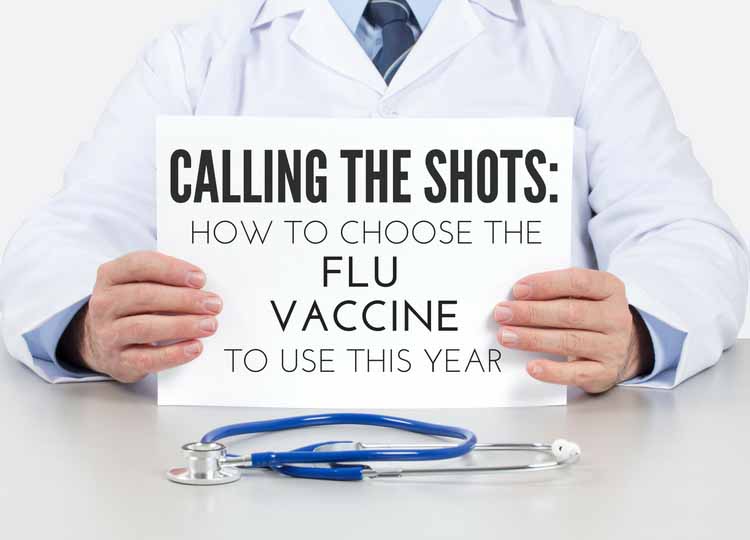 Flu season is once again upon us, and the CDC recommends that everyone six months or older receive a flu vaccine, with it being even more important for those who have a high risk for complications, like the elderly, children under five, and pregnant women.
Flu season is once again upon us, and the CDC recommends that everyone six months or older receive a flu vaccine, with it being even more important for those who have a high risk for complications, like the elderly, children under five, and pregnant women.
This season, there are a number of different flu vaccines recommended for different groups of people, dependent on age, health and relevant allergies.
What Vaccines are Recommended this Year?
This year, doctors have some options in addition to traditional flu shots for their patients.
Standard dose flu shots: Most standard dose trivalent shots are produced using a virus that’s grown in eggs. Different trivalent formulations are used for various age groups, with most being given in the arm muscle. This is the go-to vaccine formula for most people aged 18-64.
High-dose for older people: A higher dose trivalent vaccine has been formulated for people aged 65 or older. Fluzone High-Dose is made by Sanofi Pasteur Inc. This vaccine contains four times more antigen than regular flu shots, with the intention to boost the immune response.
Shot made with adjuvant for older people: A new seasonal flu vaccine, Fluad, has been approved this season that contains adjuvant for adults aged 65 and over. An adjuvant is a vaccine addition that creates a stronger immune response. This particular vaccine is the first of its type in the U.S.
Shot made with virus grown in cell culture: Cell-based vaccines are created by growing viruses in animal cells, as opposed to the egg-based process for most flu vaccines. Flucelvax is stored frozen, so can be grown more quickly in the event of a major outbreak, and is also appropriate for those with egg allergies.
Shot made using recombinant vaccine: This type of vaccine, Flublok, doesn’t use a live flu virus or chicken eggs in production. But it does have a shorter shelf life than other influenza vaccines, with an expiration date of nine months from manufacture. This vaccine is not dependent on egg supplies or limited by virus selection that can only be used for growth in eggs, making it easy to ramp up production quickly if needed. It’s also suitable for people with egg allergies.
No nasal spray: One important note is that the CDC recommends not using any nasal spray flu vaccine this season.
Coding for Claims
We put together a handy graphic that gives all of the proper Medicare Q codes for influenza vaccines. Here you will find all of the administration and diagnosis codes for flu vaccines you administer within your practice

— This post Calling the Shots: How To Choose The Flu Vaccine To Use This Year was written by Manny Oliverez and first appeared on Capture Billing. Capture Billing is a medical billing company helping medical practices get their insurance claims paid faster, easier and with less stress allowing doctors to focus on their patients.
Capture Billing






 Flu season is once again upon us, and the
Flu season is once again upon us, and the 